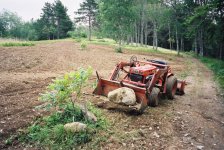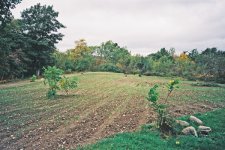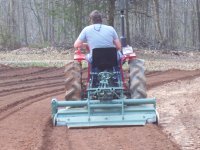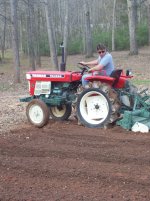charlz
Elite Member
Yes, there isn't much point in tilling past the point of where you get the depth you want. Turning your soil into flour/dust doesn't do anything for it.
I think most tillers go down 6-7 inches or so. If you are going to do deep root crops like carrots then you will want to rip that section pretty deep. Carrots are so cheap at the store I don't even bother.
I'm a firm believer that you can never have enough compost. The stuff is like a magic trick, it just disappears. You could work some finished compost in this year, apply it between tilling passes. Manure should be applied something like 3 months in advance of planting so I would avoid that this year if you have it available to you.
You could work some finished compost in this year, apply it between tilling passes. Manure should be applied something like 3 months in advance of planting so I would avoid that this year if you have it available to you.
I prefer to not broadcast fertilizer and work it in... the stuff that ends up between the rows etc just helps the weeds grow. I like to use Osmocote slow-release and just sprinkle it around the plants.
I think most tillers go down 6-7 inches or so. If you are going to do deep root crops like carrots then you will want to rip that section pretty deep. Carrots are so cheap at the store I don't even bother.
I'm a firm believer that you can never have enough compost. The stuff is like a magic trick, it just disappears.
I prefer to not broadcast fertilizer and work it in... the stuff that ends up between the rows etc just helps the weeds grow. I like to use Osmocote slow-release and just sprinkle it around the plants.




